The recent Antares article ‘Heavy Traffic’ reported on ‘Cowboy XL’ – phase-one of the US Air Force Special Operations Command (AFSOC) combined forces exercise, Agile Chariot. This article reviews the second phase, in which the USAF’s 15th Special Operations Squadron supported US Army and Air National Guard units in off-airfield forward operations.
ACEing it
Major Matt Waggy from the 15th Special Operations Squadron was the principal driver behind AFSOC’s exercise ‘Agile Chariot’ and he related how it eventually evolved into a complex two-phase evolution to illustrate the ACE (agile combat employment) principle. “At first, we just had ‘Cowboy’ to support off-airfield integrated combat turns for ANG A-10s and an MQ-9 unmanned aerial vehicle, but then I reached out to the 160th SOAR (Special Operations Aviation Regiment) Night Stalkers because I really wanted to incorporate them into the exercise.” Lt. Col. Dave Meyer, Deputy Mission Commander for Agile Chariot, initially opined to Maj. Waggy that his intention to incorporate so much into one exercise was unworkable. After surveying two stretches of Wyoming highways however, the pair decided that the concept would be achievable if the exercise was split into two separate phases.

Waggy and Meyer realized that if they used both surveyed highways, they could focus on a proactive phase with ‘Cowboy’ and a second, reactive phase with the 160th SOAR that became ‘Objective Speedgoat’. “While I had originally hoped to incorporate one of the 160th’s MH-6M Little Birds into ‘Cowboy’, the 160th almost always operates their Little Birds in pairs, rather than as single-ship flights. Then we realized, now we’re already here and have all the resources, why don’t we do both? Then we can use a pair of Little Birds and get a realistic example of what we could expect to encounter in a real-world operational scenario,” Maj. Waggy explained. He also pointed out that running two consecutive, differing phases proved that the demonstrated capabilities would be both adaptable and repeatable.
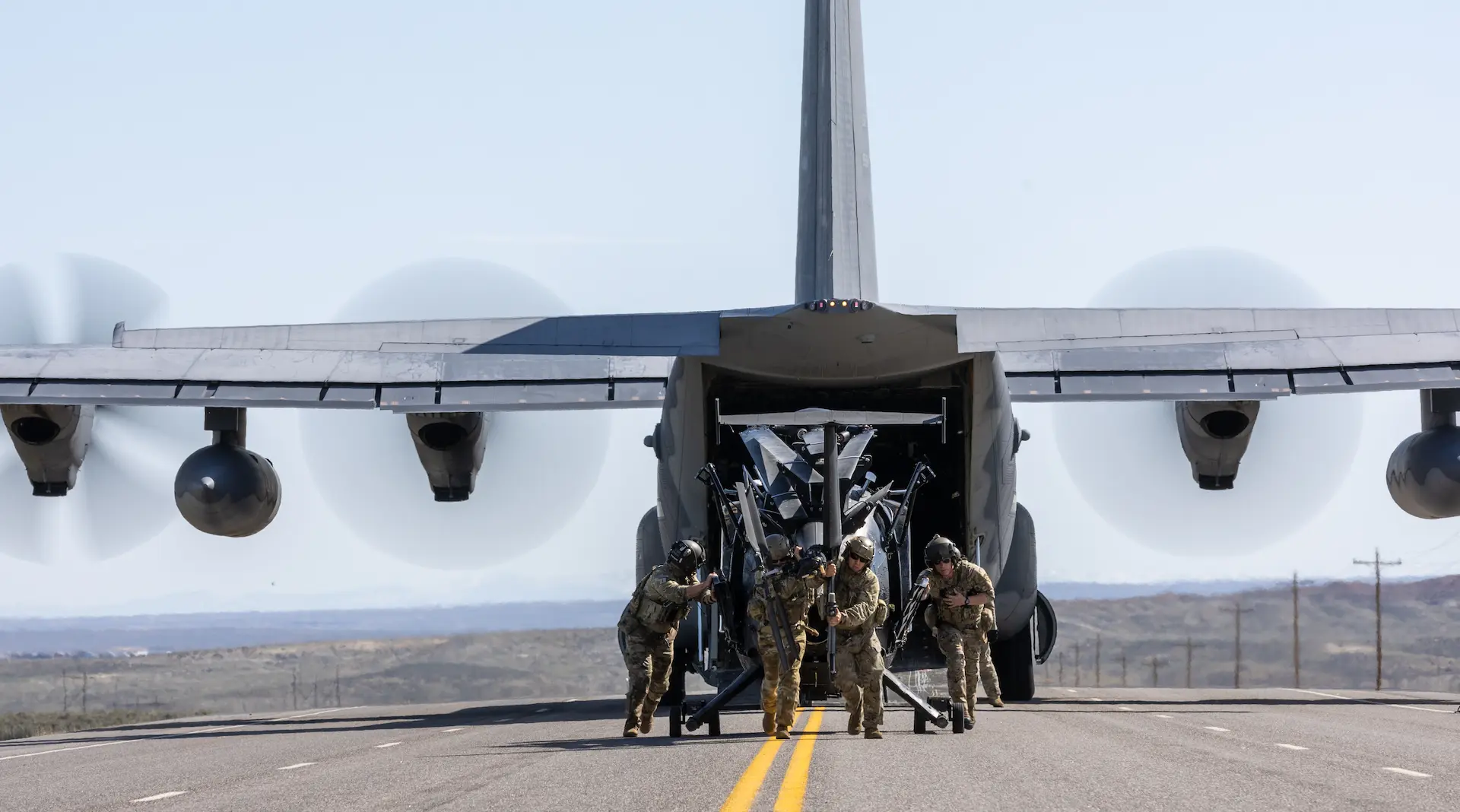
Working Together
The 15th SOS maintains an extremely cooperative, close relationship with the 160th SOAR and Maj. Waggy remarked that the Army unit was immediately enthusiastic about the combined exercise when it was proposed to them. Also enthusiastically on board with the exercise was the 123rd Special Tactics Squadron of the Kentucky Air National Guard, one of only two special tactics units in the ANG, an integral component in the maneuvers that would be engaged in during Speedgoat and occasional operational collaborators with the 160th. “The 123rd fulfilled a lot of training objectives out of Speedgoat, some validation exercises and some evaluations done, so they were able to accomplish a lot during just one exercise,” he reported. “The whole point of Speedgoat was to prove how we can get our SOF customers closer to where they need to go and provide the support to let them go and conduct their special operations activities.”
As they did for ‘Cowboy’, members of the 123rd STS secured the landing site and surrounding area prior to landing the 15th’s MC-130J Commando II transport. A pair of 160th SOAR Little Birds was unloaded, re-assembled and dispatched on their mission, transporting members of the 123rd to fast-rope down and recover downed Airmen, return them to the landing site, load them onto the MC-130J and depart again. Special Operations units understandably like to keep a lot of what they do to themselves, due to the covert nature of much of their mission set, so providing forward off-airfield support for a combined 160th/123rd operation to recover downed airmen revealed little of clandestine SO tactics and procedures. Leadership of the 123rd initially planned the evolutions to be carried out during Speedgoat and then coordinated with the 160th and 15th to ensure their desired goals were included, and to fine-tune and finalize the details. “Even though we’re running the exercise, we play the supporting role in Speedgoat for an operation that was conceived by the 123rd,” noted Maj. Waggy.
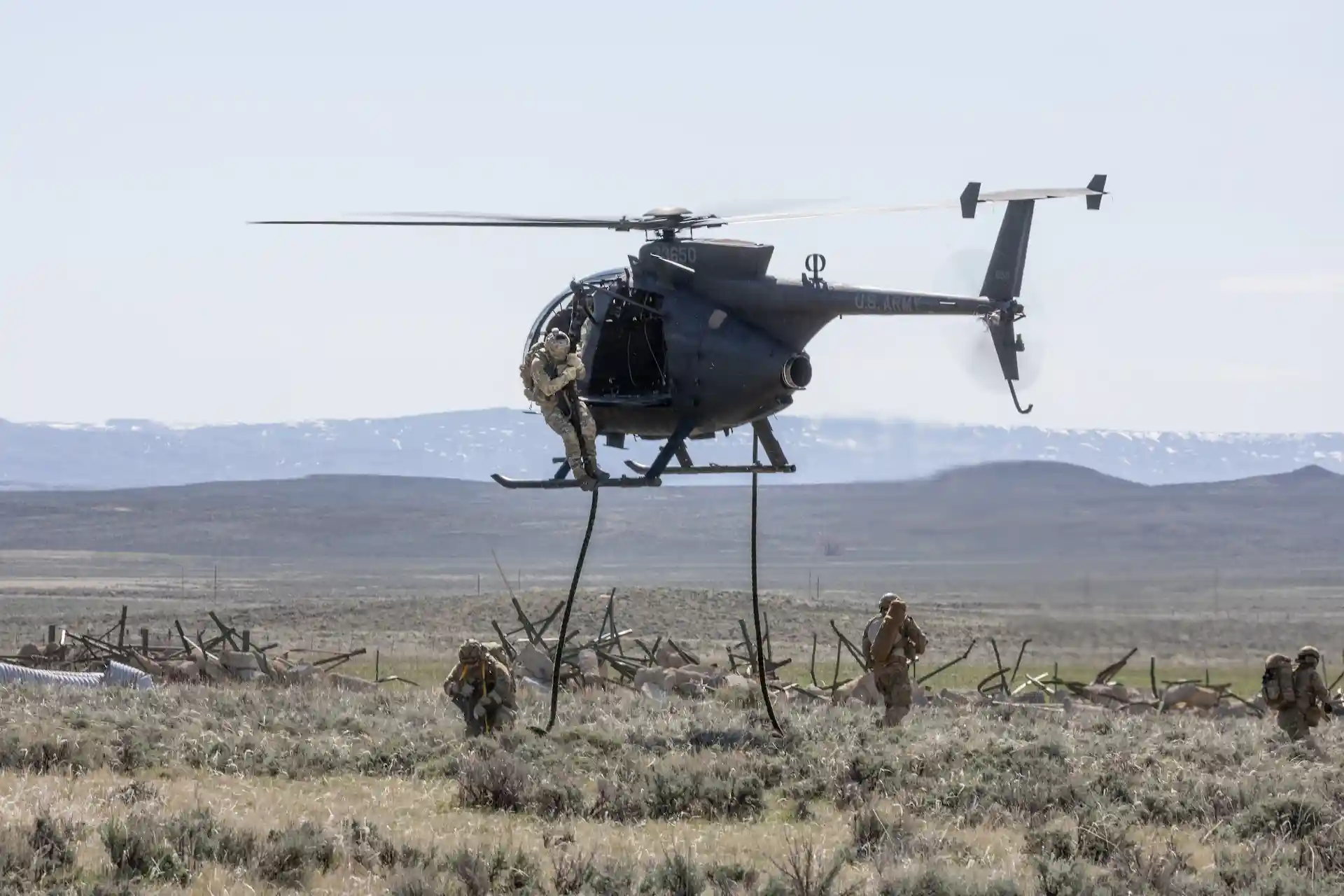
Highway Ops
The choice of highway introduced challenges likely to be encountered when conducting off-airfield operations. The terrain was not flat but included rolling country and surrounding hills, while close obstacles included numerous power lines and signposts. “That all added complexity that we thought gave a very realistic representation of what we’d likely encounter in a real-world situation,” said Maj. Waggy. “It was also where we had to put all our trust in the 123rd team that had measured everything beforehand during the site surveys. I was on the flight deck coming in and it was like flying into a tunnel, but it’s not about what it looks like, it’s a numbers game and that’s where you just have to trust those numbers and trust your team.”
Obviously, the exercise was scripted out as precisely as possible but by design it was time-sensitive and included some variables that had to be allowed for. “There was an injured airman to be recovered and we had to allow for medical treatment before and after boarding the aircraft. There’s no way of knowing how combative the patient will be or exactly how long it will take to administer medical treatment. We also had observers on the scene, something we had to allow for that would not be the case in a real scenario,” Maj. Waggy advised. Although there were fewer observers than for ‘Cowboy’, it did entail some backside choreography to keep observers clear of dust, rocks and debris kicked up by nearby maneuvering helicopters. “Things happen and there are always unexpected hiccups. That’s why it’s so important that the aircrews, the groundcrews and the teams are professionals and very good at what they do. It’s important that realistic training reinforces that because it’s impractical to be landing on highways every day of the week. Difficult, realistic training with those skills is what makes this successful and this kind of evolution also reinforces home-station training.”
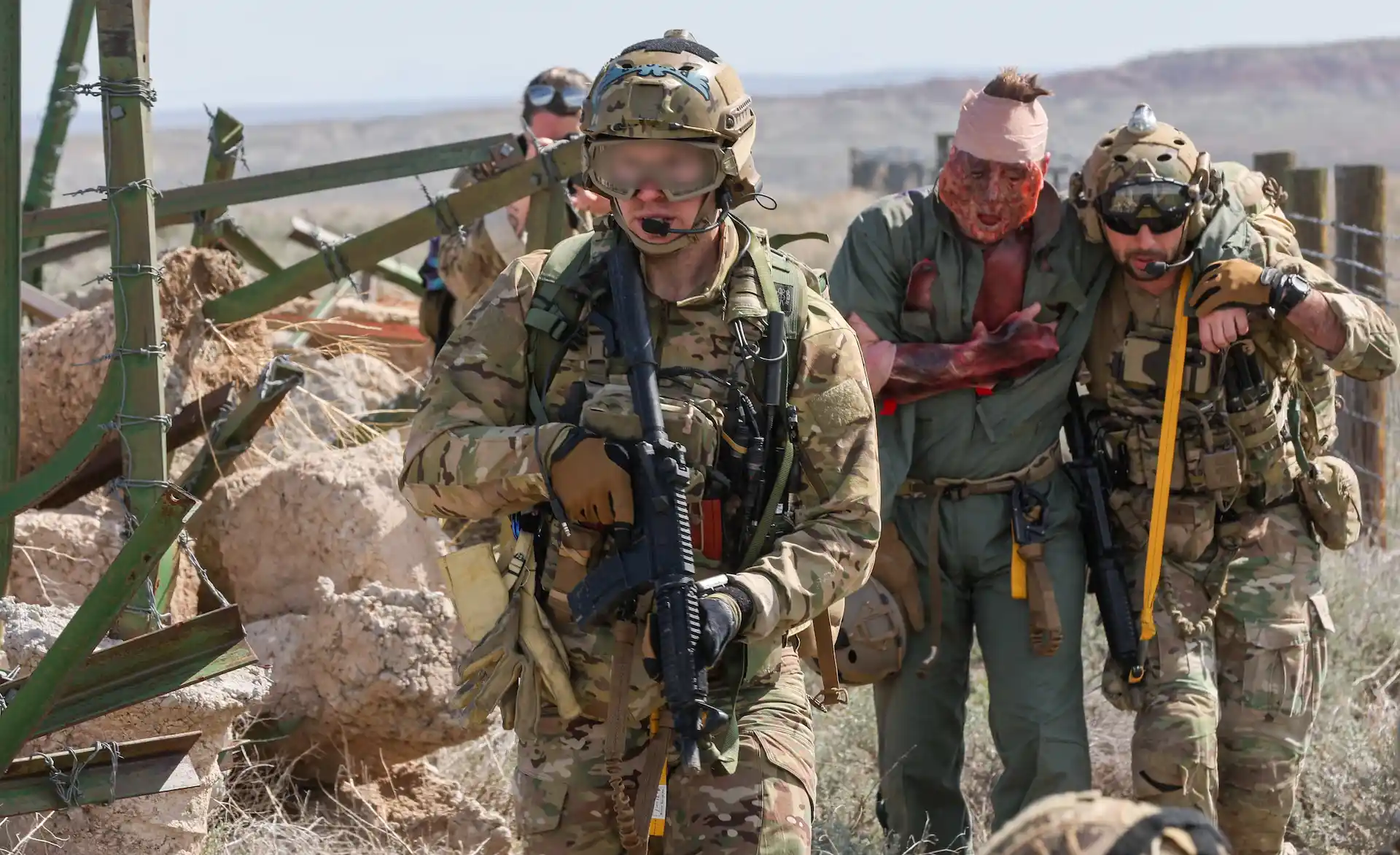
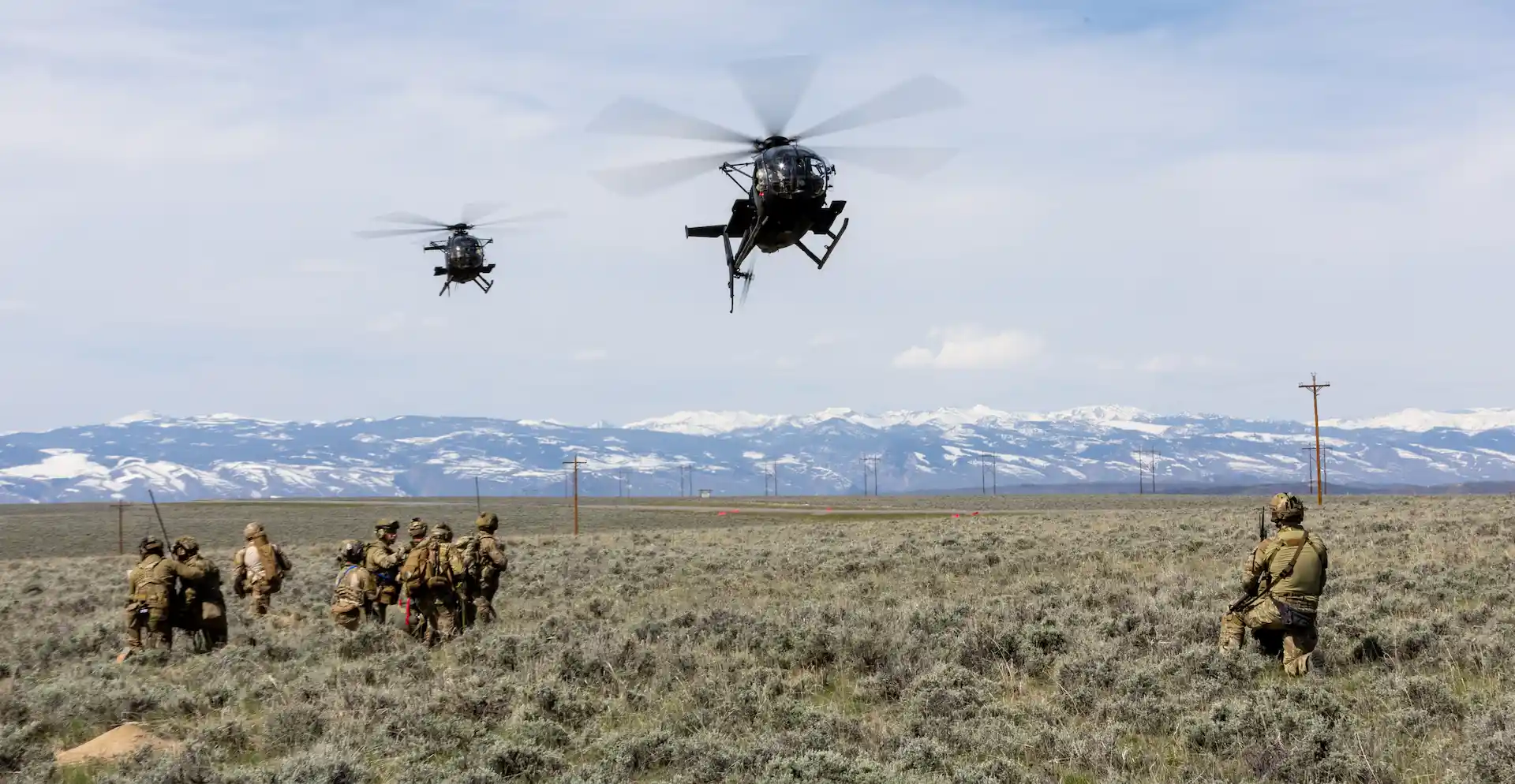
Hercs and Little Birds
A pilot for the 160th stressed that there was a tight, symbiotic relationship between the 160th’s Little Birds and the MC-130s. “We’ve got short legs, fuel-wise, so they are our ticket to get to the fight. The more willing they are to be expeditionary and land at un-improved sites, the closer we can get to where things are happening. Therefore, if us joining in on this helps them, then it also helps us.” Echoing comments from exercise leadership, he added that such exercises also helped build and cement relationships in units that work so closely together on a regular basis. Risk mitigation meant ensuring the 123rd’s members that would fly on the Little Birds were all current on their fast-roping qualification and this was carried out immediately prior to the commencement of the exercise. Because Speedgoat was carried out in the daytime, it did not pose an inordinate level of difficulty for the 160th pilots, although one acknowledged the challenges posed by the 5,000ft-plus altitude and the weights at which they were operating. “That definitely reduces our available power margin and the weight we can carry so we have to mission-plan pretty specifically to know what we can give them.”
Speedgoat presented the first opportunity for many of the 123rd’s members to fly on a Little Bird and because they were largely unfamiliar with 160th cooperation, the planning and briefing stages also gave the opportunity to mentor and teach them the likely demands they would face and the typical elements they would need to consider for combined operations. “It definitely wasn’t one-sided when it came to learning things though, because we don’t work with STS units that often, and I learned a ton about how they survey airfields and their mobility aspects,” said a Little Bird pilot. “We’re now working with them to facilitate some other training we’re doing, to survey airfields in other places because we’ve developed a contact and now have that relationship.”
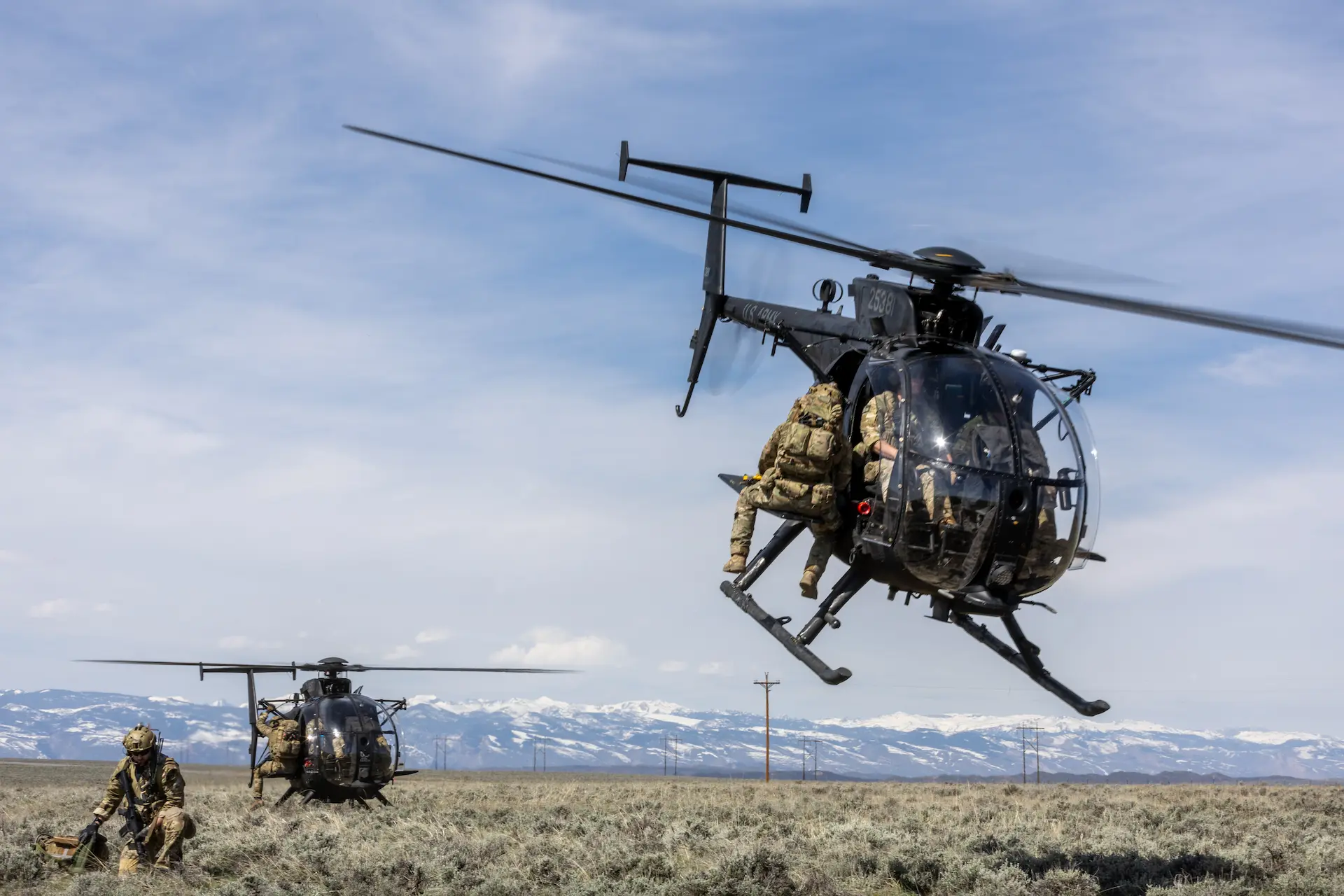
A pilot from the 15th commented, “We’re meeting new people, putting things together, creating new relationships, networks and contacts. You know you’re doing alright when the debrief involves a lot of ‘What can we do next?’ and more idea generation.” When the term Special Operations is raised, aviation does not usually come to mind for most people. It understandably gets very little publicity so the two phases of Agile Chariot were a rare opportunity for displaying the joint capabilities of SO aviation and ground units. Indicative of the mutual respect between the Army and Air Force SO units was a comment by one of the 15th pilots, who stated that those who did know of the 160th, also knew its reputation as the pinnacle of Army aviation. “Anyone who saw them operating during Speedgoat would realize that that reputation is well-deserved, as those guys are consummate professionals,” he acknowledged. Maj. Waggy added, “We only want to work with the best of the best, and the 160th is that partner for us.”
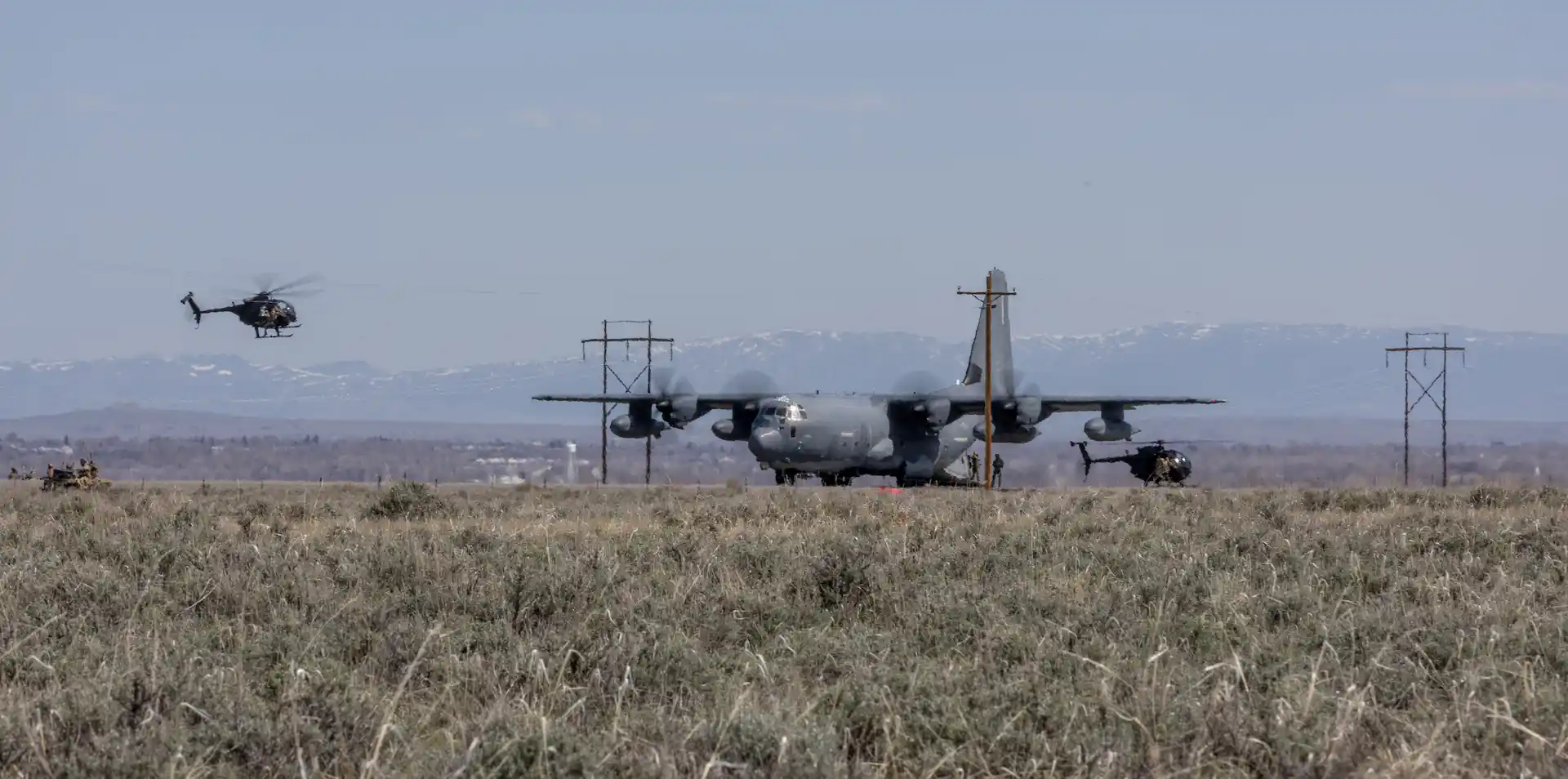
NCOs Drive Results
Agile Chariot highlighted the importance of NCOs (non-commissioned officers) in the effective functioning of the military. E5 Staff Sergeants and above are the day-to-day core drivers of military unit operations. As an example, Lt.Col. Meyer pointed out that E7 Master Sergeant Devin Butcher was the Combat Control NCOIC / Flight 2 with the 123rd STS and, with one E3 exception, all 123rd ground troops involved in the exercise were NCOs. “Although the officer corps makes the decisions, it is the NCOs who do almost all the work,” Maj. Waggy stated. “We gave the intent, Devin and his team ran with it, planned it out and presented the plan to the mission commander for approval. I looked at it and said it sounded like a bad-ass way to do it; approved!” It was pointed out that everyone on the Agile Chariot team was hand-picked for a reason. “Everyone had buy-in, so their success went towards the overall success of the mission. To an observer the whole thing looked seamless and perfect, but there was a whole year of hard work that went on behind the curtains to make that happen.”

The rear crew in the 130s and the Little Bird crew chiefs are all NCOs, while an NCO heads up the FARP guys. “You cannot do this without them, they have decades of experience and you’d be pretty ignorant to ignore that. We rely on our NCO corps for their expertise and idea generation and that’s what makes the Department of Defense successful,” Maj. Waggy elaborated. “We might take out a perfectly good aircraft and break it. What we don’t see when we come back is that the maintainers are then out there for twelve hours through the night fixing it so we can take it out and break it again. So, what we try to do to give back to them is take them up on fam’ flights during our training sorties so they see what we’re doing with what they give us.”
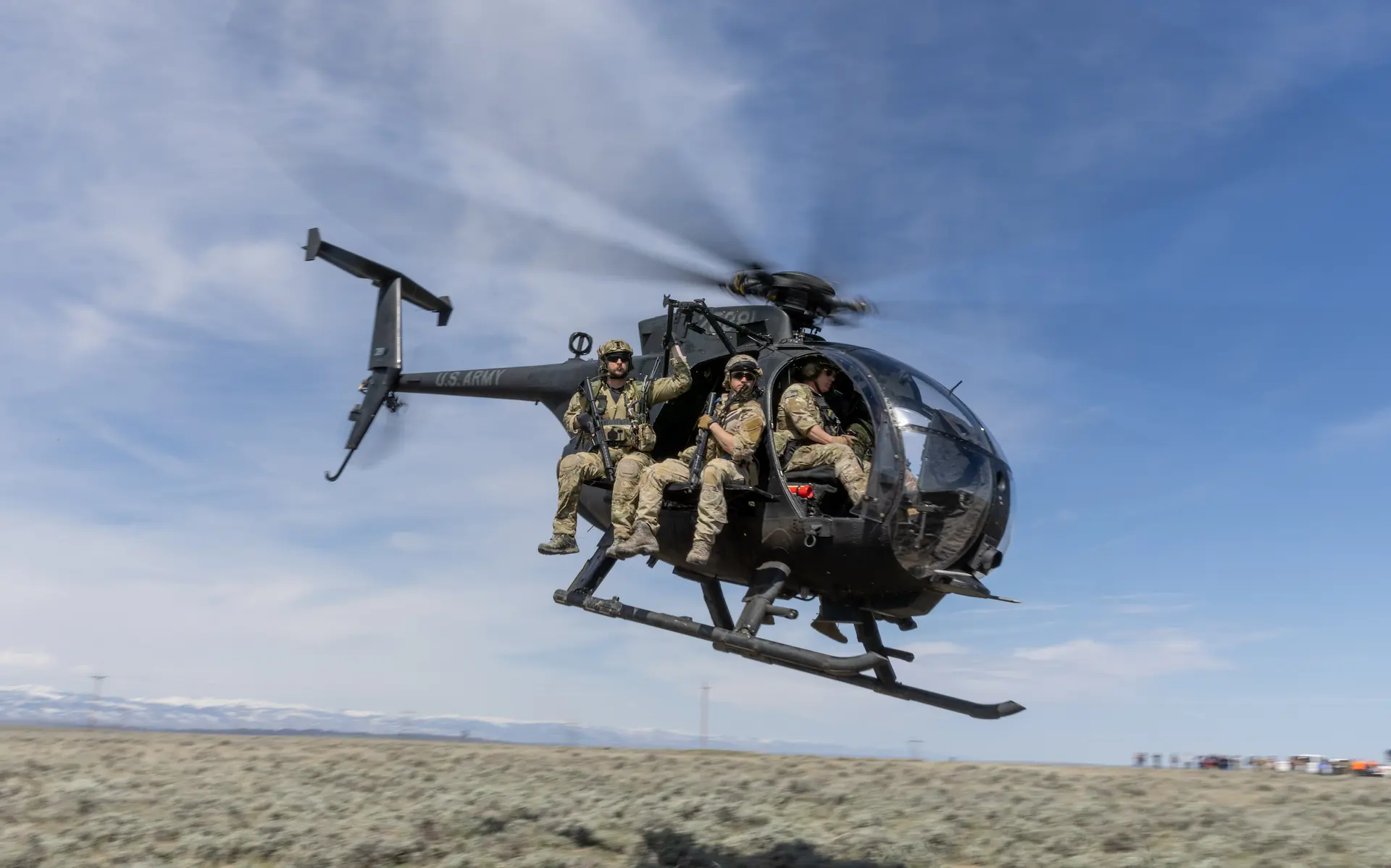
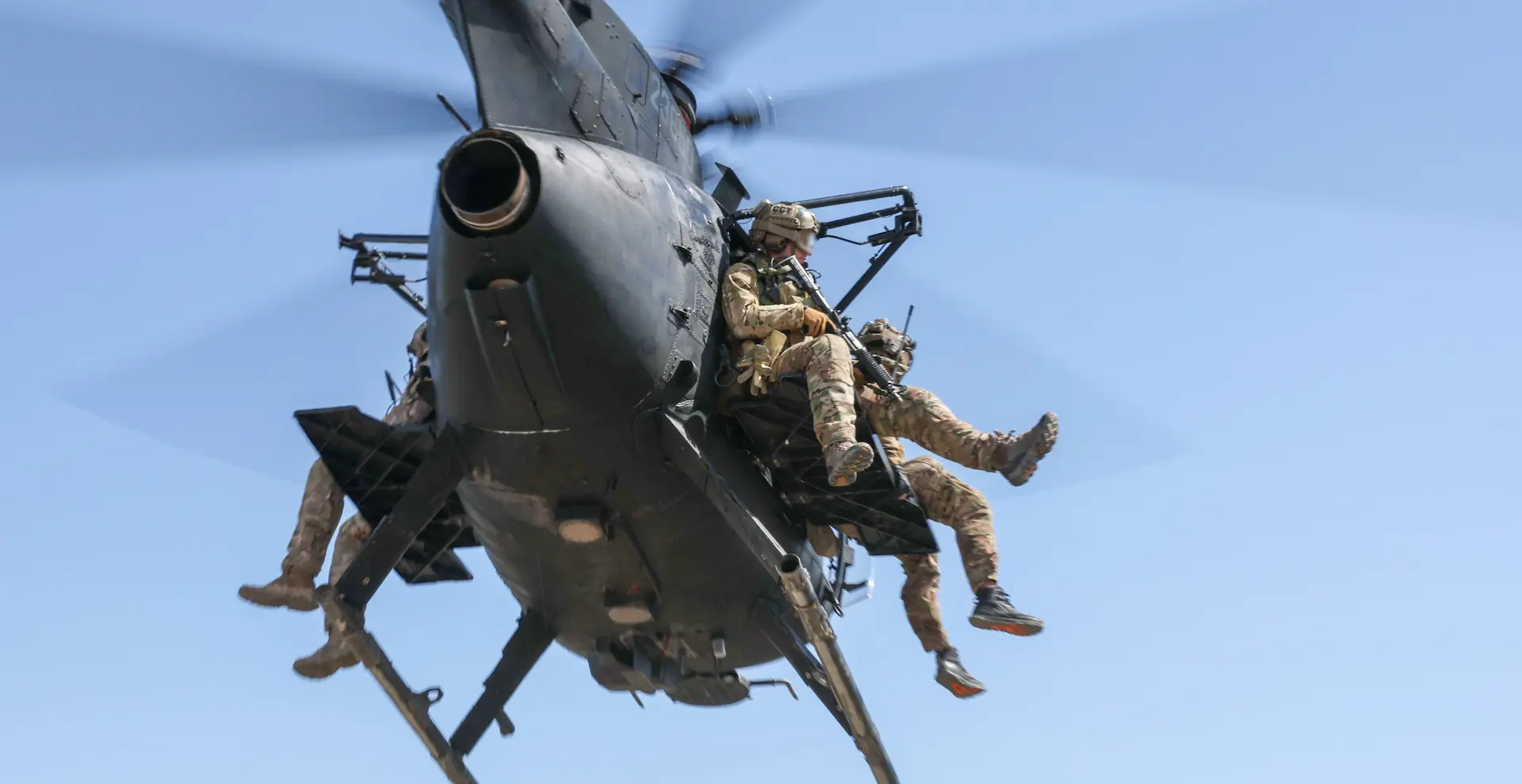
The Night Stalker pilots agreed that a major benefit they gained from Speedgoat was a deeper understanding of just what is involved in planning and executing landings at un-improved sites. That understanding builds, in turn, an increased level of trust in the 15th SOS when they are transporting and deploying the 160th’s Little Birds. “I trust those guys. When I’m sitting in the back, we’ll get there, offload down the ramp and fly away. That’s all I need to know but with other units, I might not have that absolute level of trust,” commented one. Equally, it gives the Night Stalkers the opportunity to demonstrate their ability to the 15th, operating in extremely close proximity to its aircraft and building the trust that they can safely operate their helicopters in a manner that no one else would be permitted to do. “To the best of my knowledge, this is the first time we’ve been in the back of a 130 landing on a highway. It’s important to us operationally though, because it’s already been proven that we can’t rely on airfields, as they will inevitably be priority targets in any conflict,” the pilot noted.
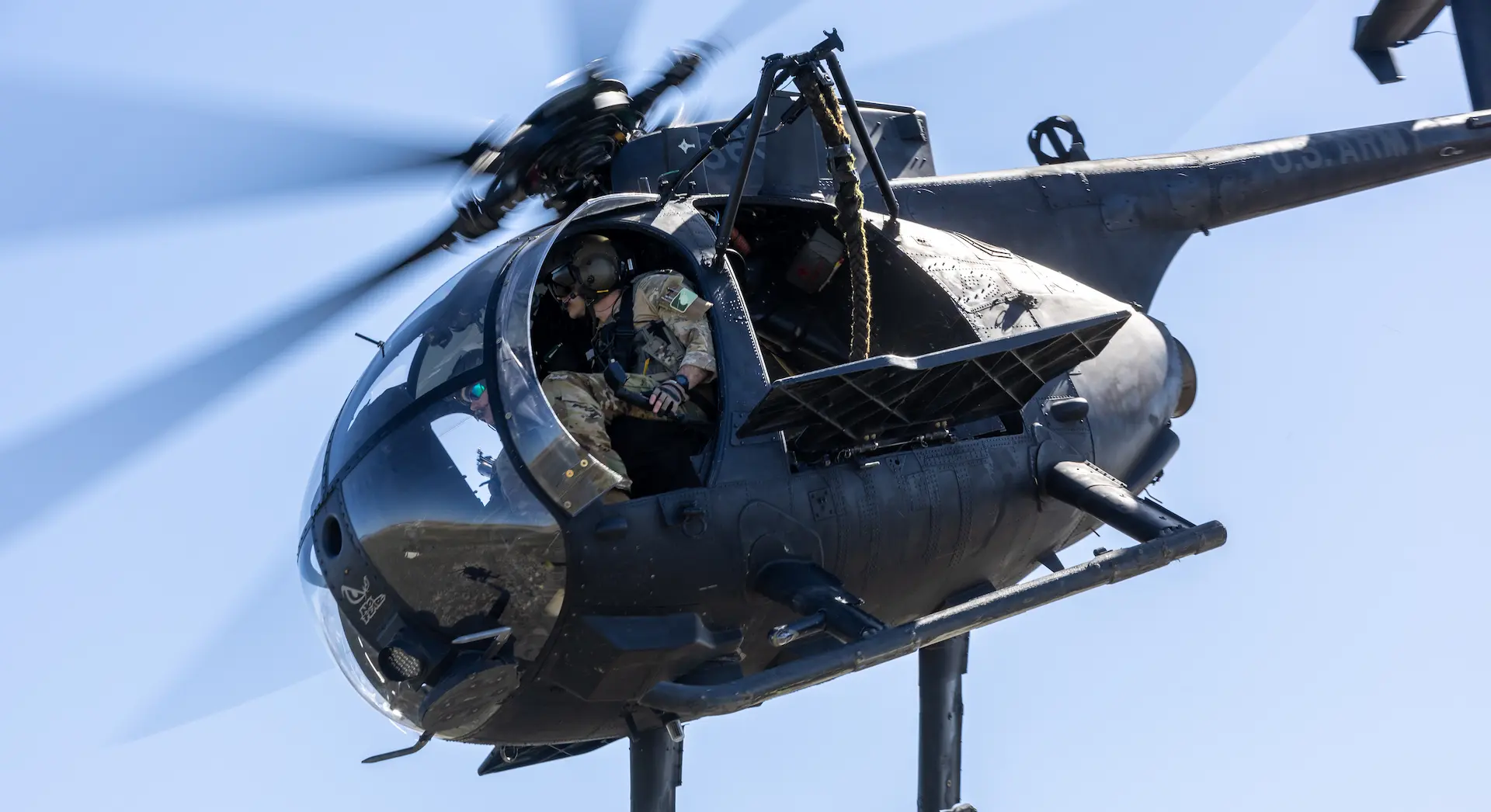
Personal Investment
Maj. Waggy commented that although Agile Chariot was all business, for both Meyer and himself it was also personal because they had invested so much time and effort into bringing it to fruition. He concluded, “The big take-away from this is that it was not a stunt. This was not a demonstration for DVs (distinguished visitors), it was a realistic tactical exercise and it achieved 100 percent operational success. Nevertheless, it did demonstrate to those visitors and the public that this is what their military can do.” From the Night Stalkers point of view too, the exercise was a total success. Although the exfil’ segment was not conducted as initially planned and briefed, a 160th pilot pointed out that this was an accurate reflection of a real-world scenario. “When you go on a mission there is always a plan and an expectation for exfil’ but that is always dependent on how things transpire on the ground. It is not at all unusual to have to adapt and conduct an exfil’ under a different scenario so this was just business as usual for us.”
In closing, Maj. Waggy expressed much appreciation for the Governor of Wyoming’s willingness to permit an outside operation to execute in his backyard and for how that strengthens the relationships between the permanent US military, military Guard units and the Wyoming public. A secondary benefit of such relatively visible displays of military capability is a positive flow-on boost to recruiting, as recruitment and retention is increasingly becoming problematic, not just in Special Operations but within the entire military. With the 15th SOS and the 160th SOAR each at the pinnacle of Special Forces aviation in their respective services, the two phases of Exercise Agile Chariot demonstrated a high level of off-airfield capability and clearly illustrated the benefits of close cooperation between peer organizations at the top of their game.
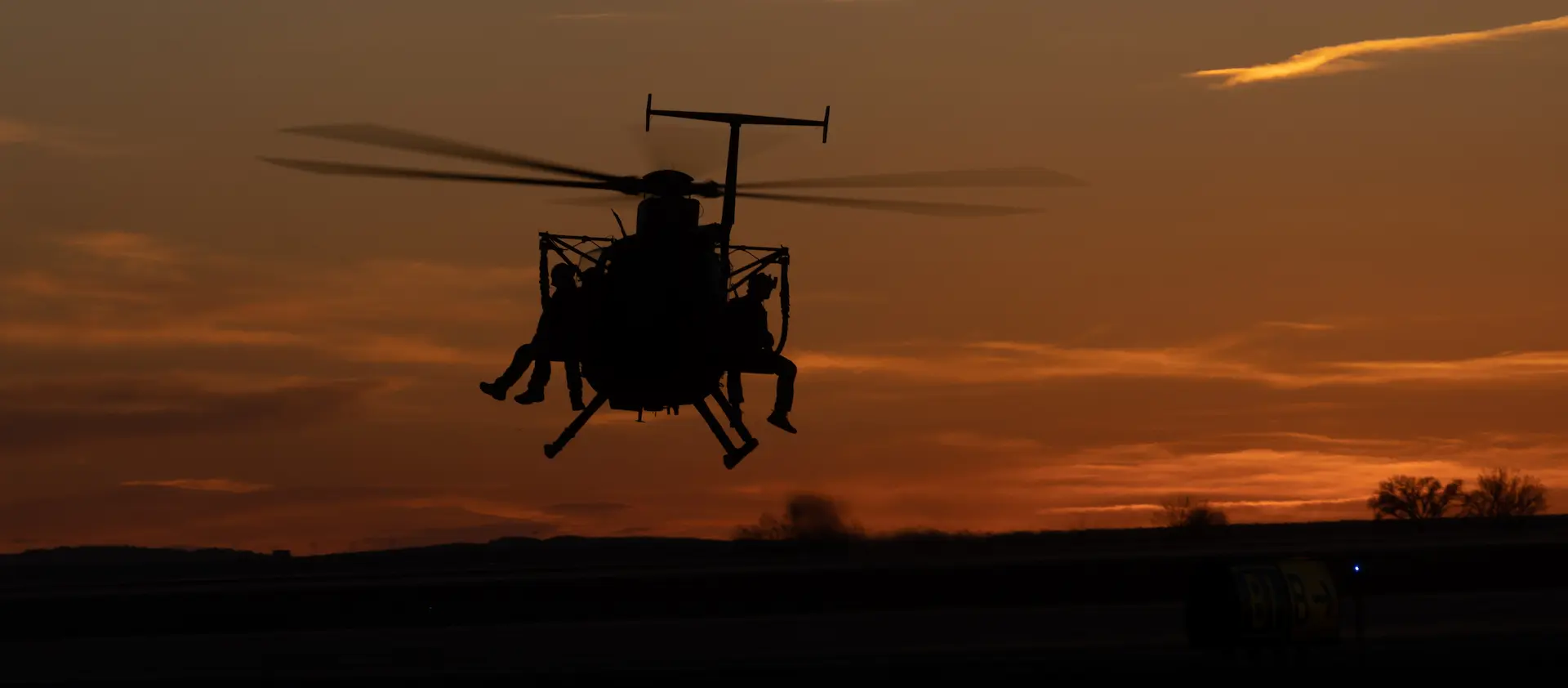
 HOME
HOME



